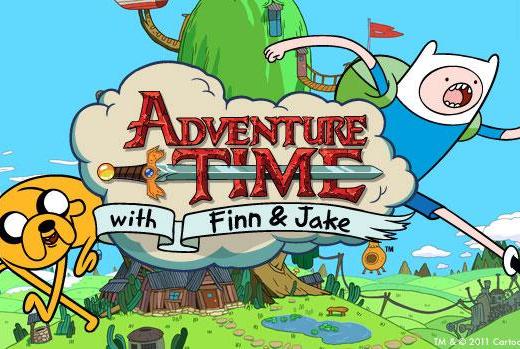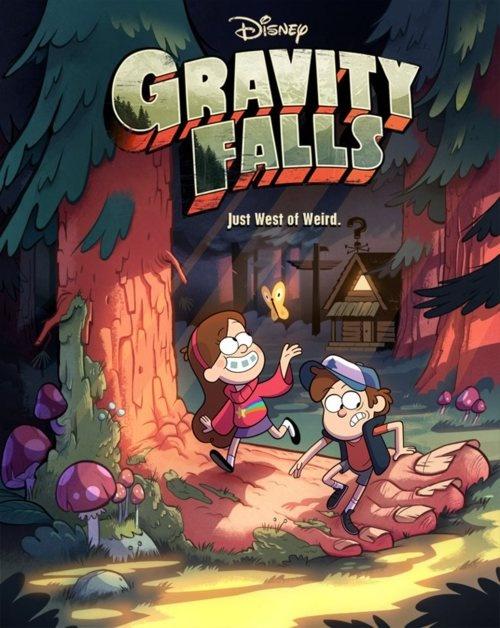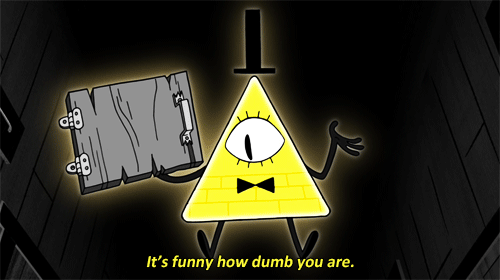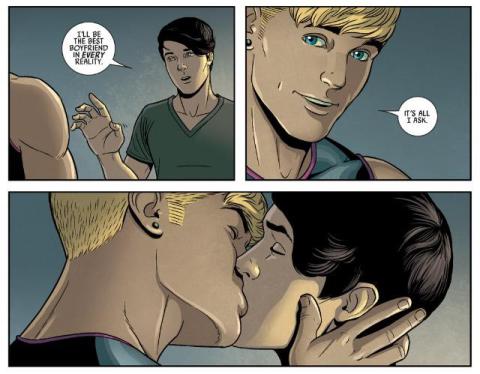It’s a cartoon special this week! Thirsty for more adventure? More wackiness? More epicosity? This week we’re taking a break from the world of comics and manga recommendations to count down our top 6 (because 5 just wasn’t enough…) kids cartoons – other than Adventure Time – that you should really be watching right now:
- Bravest Warriors
Channel: You Tube/Cartoon Hangover
Creator: Pendleton Ward
If you’re already an Adventure Time fan, then Bravest Warriors is a pretty easy sell when you realise that they share the same creative talents of Pendleton Ward. Set in the year 3085, the show revolves around Ward’s version of the Teen Titans as they travel around weird and wonderful parts of the universe having weird and wonderful adventures. Although it is aimed at a more mature audience than Adventure Time – with references to beer and a cheeky elf named, um, ‘Wankershim’ – it still feels very much like a kid’s show at heart, full of adorable creatures, punchy slang, bizarre plot lines, and heavy emphasis on friendship and emotion.
The beauty of Ward’s distinctive storytelling method is that events unfold in a seemingly random way on the surface, but upon closer inspection clearly rely on their own internal logic, with the seeds for overarching story arcs hinted at way before they come to fruition. That feeling of ‘randomness’ makes each episode wonderfully unpredictable, fresh, and organic.
Just remember: It’s always been Wankershim!
- Regular Show
Channel: Cartoon Network
Creator: JG Quintel
Although superficially very different, Regular Show and Bravest Warriors actually have a lot in common. Both are shows whose target audience is adults, but very much have the same appeal as a kid’s show (and certainly more appropriate for kids than other brands of adult cartoon, i.e. anything made by Seth McFarlane). Both of their respective creators also attended and befriended each other at The California Institute of the Arts and went on to work on The Marvelous Misadventures of Flapjack at Cartoon Network Studios together. Ward and Quintel also provide the voices of main characters in their shows, and this ‘hands-on’ approach to their creations keeps their shows consistently true to their unique creative visions.
Quintel’s Regular Show revolves around the lives of two minimum wage groundskeepers, Modecai – a blue jay – and Rigby – a racoon, who spend most of their time avoiding work and being inadvertently sucked into unusual situations involving things like portals to alternate dimensions and the ghosts of guys from the 1980s who partied too hard. The show also features a beautiful watercolour-wash effect in its art; naturalistic dialogue in its scripting; and references to obscure 1980s/1990s pop culture and media that – through surreal reinterpretations – manage not to isolate any younger viewers.
And if that wasn’t persuasion enough, Mark Hamill voices an immortal yeti in it called Skips. Enough said.
- Teen Titans GO!
Channel: Cartoon Network
Creators: Glen Murakami & Sam Register
Developers: Michael Jelenic & Aaron Horvath
The original cartoon incarnation of DC comics’ Teen Titans in 2003 was nothing short of perfection. Dramatic, funny, touching, stylish, and hugely entertaining; it’s no surprise that cartoon guru Bruce Timm and his protégé Glen Murakami were involved in it’s development. It’s no understatement that I – and many others – was heartbroken when the series finally ended in 2008, and then overjoyed when its return was announced in 2013 following a series of popular shorts by DC Nation.
But, hold on… this wasn’t going to be the same show that we knew and loved. Following the equally superb DC comics’ based series Young Justice getting (criminally) cancelled in 2013 after just 2 seasons, it became clear that Warner Bros. was going in another direction with it’s DC owned properties, and that direction was: wacky. ‘More wack! The kids love the wack these days what with that Adventure Time thing…’ the network execs probably said to each other. And more ‘wack’ is exactly what we got with the rebirth of Teen Titans as Teen Titans GO!
This version focuses on the antics that the team get up to in between all the serious crime-fighting stuff, and is suitably rendered in the chibi ‘deformed body’ style that some of the gag cutaways were done in during the original show. As such, stories for episodes are as simple as: Cyborg and Beast Boy can only say ‘waffles’ all day; Raven starts a book club; Robin gets driving lessons, etc. All of which are peppered with Internet humour, quirky cutaways, and musical montages.
Some fans have taken against this new direction, and although I do miss the original sorely, I’d rather the show was on TV in some form or another than not at all. Plus, sorry to the haters, but it really does make me laugh.
- The Amazing World of Gumball
Channel: Cartoon Network
Creator: Ben Becquelet
The Amazing World of Gumball centres on Gumball Watterson – a blue cat – and his pet talking goldfish – Darwin – who grew legs one day and now exists as his adopted brother. The pair attend Elmore Elementary School, which is inhabited by an eclectic mix of characters such as a banana, a female T-Rex, a balloon, a peanut shell with moose ears, a potted flower, an Emo ghost, and – my personal favourite – a human upside-down chin with a face drawn on, to name only a few.
The most distinctive quality of The Amazing World of Gumball though is its ingenious collagic mix of 3D and 2D animation. Characters range from 3D computer models, to 2D flat drawings, to real objects with googly-eyes and mouths drawn on; and backgrounds are real images of peaceful American suburbia. This assorted visual tapestry merges well with plots that frequently unravel from typical family sit-com scenarios into chaos, accompanied by highly-strung, fast-paced voice acting from actual children who are not afraid to go from a whisper to a screech in an instant. Amongst all the chaos however, is an abundance of sheer warmth and vitality that few kid’s cartoons ever manage to achieve.
- Gravity Falls
Channel: Disney Channel and Disney X D
Creator: Alex Hirsch
What do you get when you cross summer vacation, Oregon, grumpy elderly relatives, conspiracy theories, and an amazing jumper collection? Gravity Falls.
Created by another California Arts alumni, Alex Hirsch – who also voices two of the show’s main characters – Gravity Falls follows the summer vacation exploits of twins, Dipper and Mabel Pines, who are sent to stay with their Grunkle (Great + Uncle) Stan in his ‘Mystery Shack.’ Together with Handyman Soos and gift shop attendant Wendy, they discover the spooky mysteries of the fictional town of Gravity Falls with the help of a strange journal marked ‘3’ that Dipper discovers in the woods.
The strengths of the show are two-fold:
- It is genuinely creepy, and
- It is genuinely funny.
Combine this with excellent characterisation and fantastic voice acting – particularly from Kristen Schaal who voices Mabel – and you have the recipe for a loyal and enthusiastic fan base of children and young adults alike.
Most of the monsters that inhabit the town are well-worn supernatural and science fiction tropes – haunted wax works, time-travelling scientists, shape shifting creatures, underwater serpents, zombies, etc. – but the real underpinning of the show is the conspiratorial thread that connects each of these occurrences. Hidden patterns, ciphers, codes, and repeated motifs feature regularly and cleverly riff on the suspicions and fears of Internet Illuminati enthusiasts. The antagonist – Bill Cipher – an inter-dimensional demon in the form of a floating yellow pyramid with a single eye and dapper top hat is a clear reference to the Eye of Providence that appears on the American dollar bill, which itself is associated with Freemasonry.
This attention to detail runs through every element of the show, including its comedic elements: Mabel’s brilliant jumper collection; the post-credits gags; Waddles the pig; Grenda’s masculine voice; Xyler and Craz from ‘Dream Boy High’… This is a show you will definitely want to catch the reruns of.
- The Legend of Korra
Channel: Nickolodeon
Creators: Michael Dante DiMartino & Bryan Konietzko
Let me take you back all the way to 2005. Teenage me wakes up bleary-eyed mid-morning on a Saturday. I wonder downstairs. My sister is sitting in the living room holding a DVD. ‘I’ve recorded a cartoon I watched this morning.’ She says, thrusting the aforementioned DVD at me. ‘You have to watch it.’ That recorded cartoon was the first two episodes of Avatar: The Last Airbender, which aired on CiTV on Saturday mornings in the UK. We didn’t have catch-up TV at the time, so the effort of recording onto a blank disc was reserved for truly ‘must-watch’ stuff. No other show was more deserving of that saintly title than the Avatar series, and we diligently recorded every episode of that show from start to finish until we could buy them on the official DVD releases.
The reason for that little insight into my yesteryears is to convey the nostalgia that I – like many fans of my age group – feel for the original Avatar series, and what has perhaps led some to turn their noses up at its sequel, The Legend of Korra. The original series followed the trials and adventures of 12 year-old Aang – the ‘Avatar’ and master of the four elements – and his friends (‘Team Avatar’) as they seek to bring peace to a world ravaged by war from the over-powered Fire Nation. The series took strong inspiration from Eastern philosophies of balance; reincarnation; harmony between spirits and humans; as well as martial arts, and this also heavily influenced its aesthetic to the point at which many mistake it for an anime.
The Legend of Korra is a sequel series that takes place 100 years after the events of the first. It follows Korra, the successive Avatar to Aang, as she struggles to find her place in a fast-changing world in which industrialism and ideological challenges to the Monarchic ruling system perpetually disrupt the balance that she – as the Avatar – is tasked to keep. And yes – this is show is aimed at kids.
Some fans of the original series complain that the sequel is much weaker, but I can’t help but think that nostalgia impacts heavily on this, as the viewers I know who have discovered Avatar through Korra do not seem to harbour the same feelings. Thematically, the two shows can be seen as perfect inversions of one another: Whereas Aang struggled to accept his role in a world that desperately needed him, Korra struggles to assert her relevance in a world that constantly reject her. The Aang series was also largely character-driven, whereas the Korra series is largely story-driven. Whilst the Aang series had a single overarching story, Korra faces a new adversary in every series, with far more side-characters and subplots making up the story of each episode.
Korra’s production has also been plagued by a seemingly conscious effort by Nickolodeon to get rid of its most critically acclaimed show as fast as possible. From slashing its budget to taking it off-air completely, the network’s treatment of the show has sadly tainted the online airing of its final ever series, much to the anger of its fiercely loyal fan base.
Despite all this, Avatar remains quite simply one of the greatest cartoons ever created; striking the perfect balance between kid’s and adult animation that is only really matched by the likes of Toy Story. The world is steeped in rich history; the characters are loveable and believable; the adversaries are complex and often morally ambiguous; and the creators manage to distil mature emotional, political, and socioeconomic themes into digestible narrative and dialogue that anyone of any age can understand.
The world of Avatar is one that you will want to revisit time and time again long after its final episode airs.
Next week, we continue our cartoon special with a another list of top shows you should be watching!












